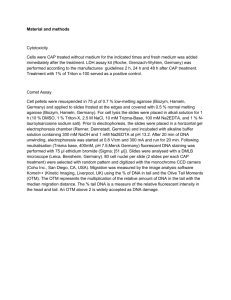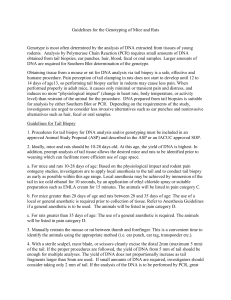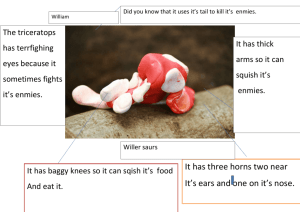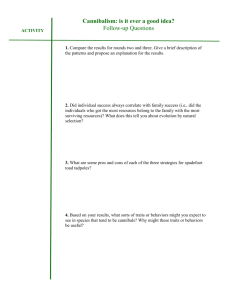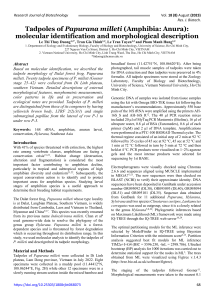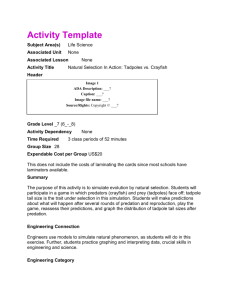Tail Sampling for Genomic DNA Purification
advertisement
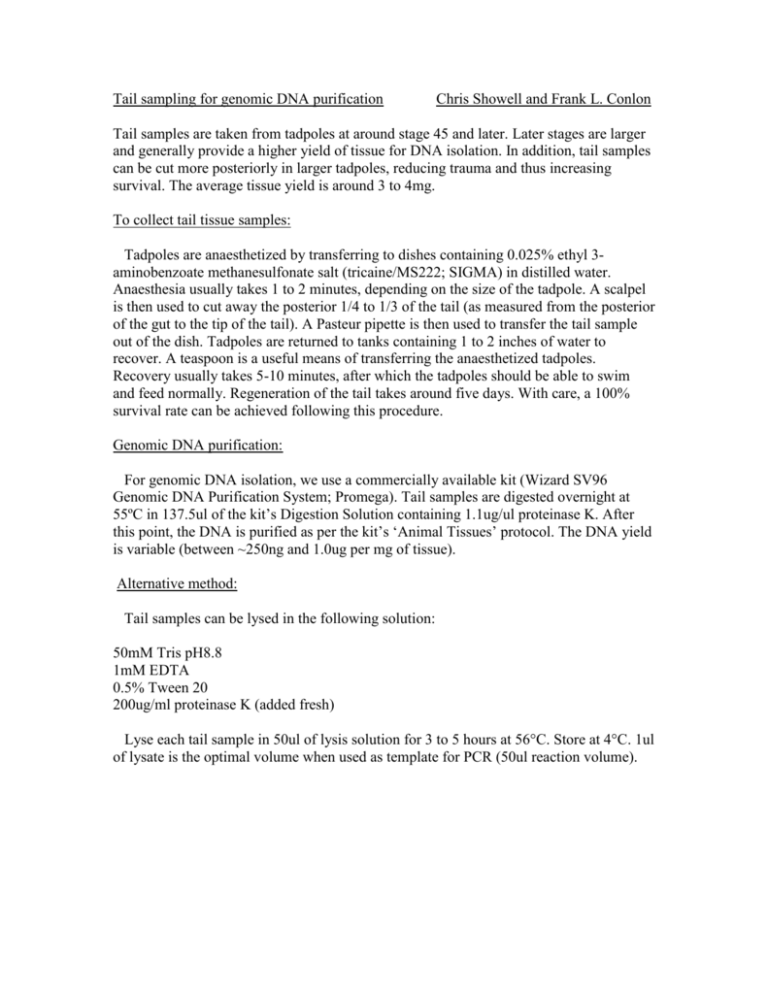
Tail sampling for genomic DNA purification Chris Showell and Frank L. Conlon Tail samples are taken from tadpoles at around stage 45 and later. Later stages are larger and generally provide a higher yield of tissue for DNA isolation. In addition, tail samples can be cut more posteriorly in larger tadpoles, reducing trauma and thus increasing survival. The average tissue yield is around 3 to 4mg. To collect tail tissue samples: Tadpoles are anaesthetized by transferring to dishes containing 0.025% ethyl 3aminobenzoate methanesulfonate salt (tricaine/MS222; SIGMA) in distilled water. Anaesthesia usually takes 1 to 2 minutes, depending on the size of the tadpole. A scalpel is then used to cut away the posterior 1/4 to 1/3 of the tail (as measured from the posterior of the gut to the tip of the tail). A Pasteur pipette is then used to transfer the tail sample out of the dish. Tadpoles are returned to tanks containing 1 to 2 inches of water to recover. A teaspoon is a useful means of transferring the anaesthetized tadpoles. Recovery usually takes 5-10 minutes, after which the tadpoles should be able to swim and feed normally. Regeneration of the tail takes around five days. With care, a 100% survival rate can be achieved following this procedure. Genomic DNA purification: For genomic DNA isolation, we use a commercially available kit (Wizard SV96 Genomic DNA Purification System; Promega). Tail samples are digested overnight at 55ºC in 137.5ul of the kit’s Digestion Solution containing 1.1ug/ul proteinase K. After this point, the DNA is purified as per the kit’s ‘Animal Tissues’ protocol. The DNA yield is variable (between ~250ng and 1.0ug per mg of tissue). Alternative method: Tail samples can be lysed in the following solution: 50mM Tris pH8.8 1mM EDTA 0.5% Tween 20 200ug/ml proteinase K (added fresh) Lyse each tail sample in 50ul of lysis solution for 3 to 5 hours at 56°C. Store at 4°C. 1ul of lysate is the optimal volume when used as template for PCR (50ul reaction volume).

